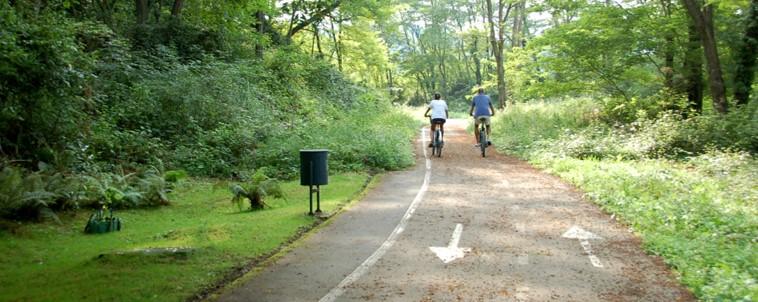
Advertising, on the route of story-living
I was watching a TV series when we decided to order a pizza. A few moments later, a cyclist appeared on the screen. With our hunger gradually increasing, I couldn’t stop imagining him with a message on a globe reading: “Your pizza will be delivered in just 4 minutes!”
The lack of blood glucose was making me delirious. I started thinking that, really, all the information is there... my personal information available on the streaming platform, my location on the delivery app… which in turn had the information that, at any moment I’d be waiting for a notification about the distance of my pizza.
So, at the first opportunity to release content (in this occasion the cyclist), the information that I was desperately waiting for was transmitted, without interruption, integrated with the story in a very relevant way at the time, relevant in its topic and totally surprising (despite technology making this type of personalisation possible, we’re never prepared for something being made so specifically for us).
But it didn’t happen. Reality didn’t go along with my delirious creativity. The cyclist didn’t send me any updates on my pizza through the TV. No globe carrying a message related to my anxious wait appeared. The "delta T", remained hidden.
A few minutes later, however, the notification from the app made my phone vibrate with an update with the proximity of the pizza. And whilst it satiated my hunger, I couldn’t stop thinking about the opportunity. In how the notification, received in the exact moment would have been so relevant to me.
Technology isn’t going to kill creativity, it will promote offering more relevant content to people, at the right time, on the right device.
The cyclist in the series that I was watching; he could have kept being a character for those people who hadn’t made a delivery order through an app. But for those who had, he’d turned into a messenger. The character, when not interfering with the plot, could appear in alternating cameos, appearing before (for those who’d ordered an hour before), or after. He would be the non-intrusive advertising vehicle for the delivery app in that series, who’s use would be to provide useful information, expected at a certain time. In addition to the cyclist, other characters can be worked on to transform their acting performance into a function, giving relevant information, knowing the best moment to provide it to each person through the information provided. Thereby, we’re leaving the age of simply advertising products to offer services, entering into one where we integrate the lives of people inside visual content (story-living).
But in order to make this jump it’s important to collect the correct information, and to know that prioritising data is about understanding that the focus of any business is to generate value amongst people (being really customer-centric / people-centric). The race for information has already started and companies like Google and Amazon can predict where we want to travel to, which car we want to buy, which pair of trainers we’d like best. However, all this effort of making predictions has to change its focus towards people, understand their behaviour and the optimum moments, to offer something at least useful and surprising.
In this race for information, we might soon see streaming services buying delivery apps, offering, for many, a favourite combination of TV and takeaway. If this happens, they might have more information and will be able to know their customers better and surprise them more. Being the owner of the information, they would know their customers routines and what times they tend to use the apps and what type of visual content they like to watch, they would be able to combine this information with the weather forecast in the area (if it’s raining, the likelihood of ordering a delivery will increase). They will know what the customer likes to eat and through all this information they will be able to surprise the customer through the content and time of delivery.
It could be seen as invasive, but not being an interruption, the perception of this invasion might change and be redefined by its usefulness. It goes beyond creating predictive marketing for sales. It’s understanding the behaviour of the customer, and based on him/her, generating useful resources, to go alongside their day. It’s changing the intention of sales. Through this, the possible perception of being an invasion can become a perception of relevance through hyper-personalisation.
Thereby technology isn’t going to kill creativity, and advertising isn’t going to die either. It will be transformed and redefined. And, just by focusing on people we can create genuine interactions which generate relevance and usefulness in key moments every day.
